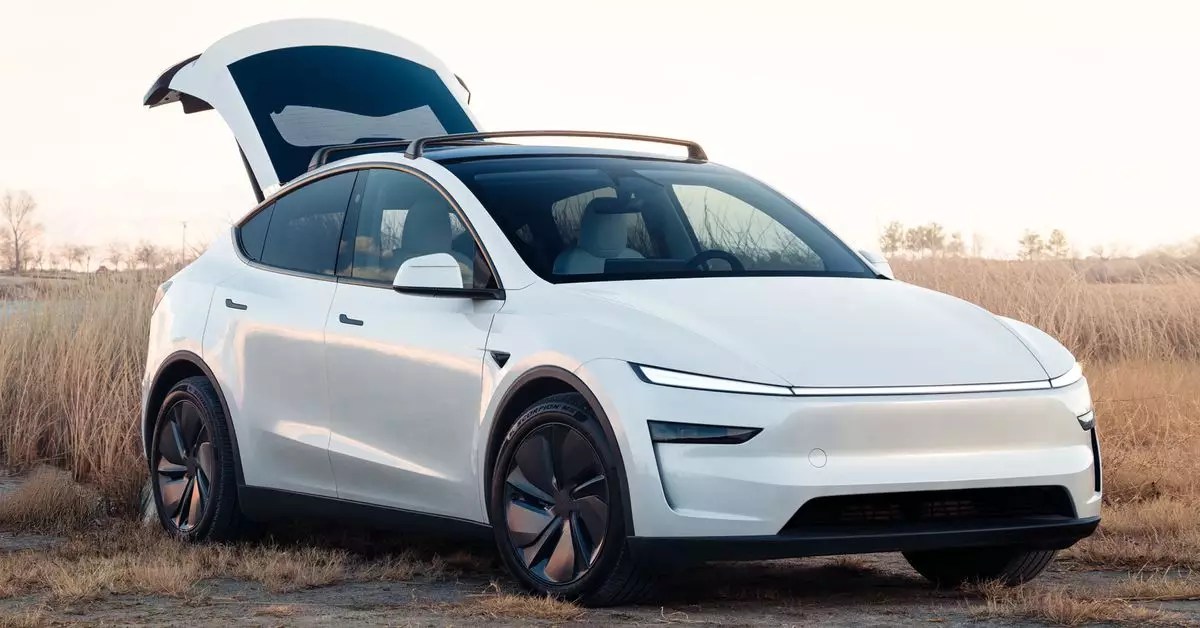Tesla, a name synonymous with electric vehicles, continues to push boundaries in automotive technology and design. As the company recently launched its refreshed “Juniper” Model Y in Asian markets, it is now venturing into the Americas and Europe. This move signals both the ambition and complexity of the evolving electric vehicle market. However, while enhancements to the Model Y are noteworthy, Tesla also faces significant hurdles that could impact its reputation and sales figures.
The introduction of the new Model Y’s Launch Series signifies a critical moment for Tesla. Geared towards the U.S., Canada, Mexico, and Chile, the Launch Series is currently the sole trim level available for pre-order. Priced at $59,990 before any applicable discounts, this version comes fully equipped with premium features, including special badging, the Full Self-Driving package, and enhanced performance through an Acceleration Boost. Such offerings, while appealing, foreground an interesting strategic choice by Tesla to position their high-end models prominently in new markets.
Despite the excitement surrounding the refreshed model, several industry experts remain cautious. Tesla’s marketing strategy appeals to tech-savvy consumers drawn to advanced driver-assist features. However, brand loyalty may be waning, especially as Tesla reported its first annual sales decline, hinting that consumers might be reevaluating their preferences in an increasingly crowded market.
The upgraded Model Y promises a slew of enhancements aimed at improving both functionality and user experience. Modifications include redesigned front and rear lights, an updated interior with an 8-inch touchscreen for backseat passengers, and improvements to the sound system and suspension. These alterations not only aim to revitalize the vehicle’s aesthetic appeal but also reflect Tesla’s ambition to provide a more comprehensive in-car experience.
Perhaps one of the more innovative additions is the new turn signal stalk, which diverges from the button-based system introduced in other recent models. This change may cater to customer preferences while also suggesting a minor shift back to traditional vehicle controls. Such decisions reveal an interesting balance that Tesla must strike: modernity versus user familiarity.
Moreover, Tesla continues to boast improvements in range and performance. The new Model Y claims a range of 320 miles, compared to the older version’s 311-mile EPA estimate. The leap from 0-60 mph in 4.1 seconds, aided by new engineering, also positions the vehicle as a strong contender in the electric SUV category, despite a reduction in top speed.
While the refreshed Model Y brings forward attractive features and enhancements, it must navigate a complex landscape of changing consumer expectations and competition. The electric vehicle market is not as unchallenged as it once was; numerous automotive manufacturers are entering the fray with electric offerings that rival Tesla’s established dominance. As a consequence, consumer choice has broadened substantially, pressuring Tesla to refine its value proposition.
One noteworthy aspect of this launch is the decision to maintain availability of the older Model Y at reduced prices. This dual-availability strategy may help retain customers who may be hesitant to commit to the newer and pricier option. However, it also raises questions about Tesla’s pricing strategy and its long-term implications for brand loyalty. With only a $4,000 difference between similarly equipped old and new models, how will consumers determine which version best suits their needs?
Tesla’s recent launch of the refreshed Model Y encapsulates the company’s ongoing quest for innovation amid the challenges of maintaining its leadership in the electric vehicle sector. While the upgrades are undoubtedly impressive, the company must tread carefully in navigating a saturated market, consumer expectations, and internal product strategy. As the automotive landscape evolves, the future for Tesla lies not only in the engineering prowess of its vehicles but also in its ability to forge emotional connections with consumers—demonstrating the brand’s reliability, value, and innovation for years to come. As the new Model Y prepares for its North American debut, all eyes will be on Tesla to see how effectively it balances these critical facets of its business strategy.


Leave a Reply